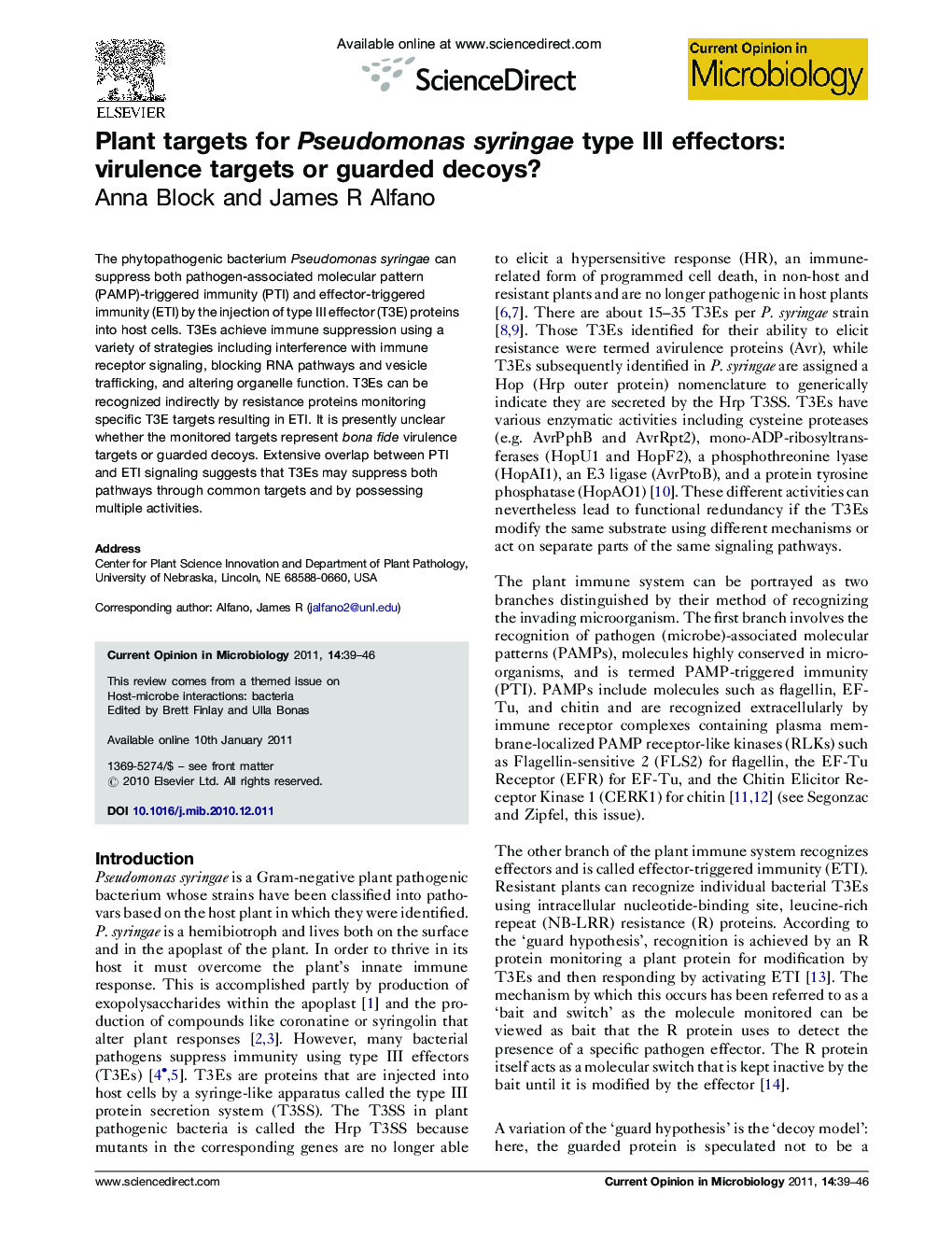| Article ID | Journal | Published Year | Pages | File Type |
|---|---|---|---|---|
| 3399101 | Current Opinion in Microbiology | 2011 | 8 Pages |
The phytopathogenic bacterium Pseudomonas syringae can suppress both pathogen-associated molecular pattern (PAMP)-triggered immunity (PTI) and effector-triggered immunity (ETI) by the injection of type III effector (T3E) proteins into host cells. T3Es achieve immune suppression using a variety of strategies including interference with immune receptor signaling, blocking RNA pathways and vesicle trafficking, and altering organelle function. T3Es can be recognized indirectly by resistance proteins monitoring specific T3E targets resulting in ETI. It is presently unclear whether the monitored targets represent bona fide virulence targets or guarded decoys. Extensive overlap between PTI and ETI signaling suggests that T3Es may suppress both pathways through common targets and by possessing multiple activities.
